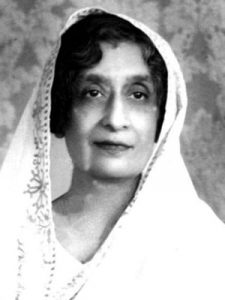Rajkumari Amrit Kaur the first health minister of India.
In 1946 the health survey done by the Govt of India recommended the creation of a major central institute for post-graduate medical education and research
Till then Indians had to go to Britain for specialty medical education.
But there were no funds to do it.
When Amrit Kaur became Health minister it was her dream to establish a great medical institute for research and specialty training
So it took her 10 years to get funding for it.
She went to UK USA Australia NZ Japan Germany Holland to get funding.
NZ was a major contributor to its funding.
Amrit Kaur was elected the first woman and first Asian to get elected to the WHO assembly.
She established TB eradication policies and programs and many TB treatment institutes.
Then lakhs of Indians were dying of malaria she established the Malaria eradication program which reduced death rates from 4 lakhs to 1 lakh in a few years.
Amrit Kaur was the princess of the Patiala Royal family. Her father married a daughter of a Bengali preacher and converted to Protestant Christianity.
Hence Amrit Kaur was a Christian and she was educated at Oxford.
She came to India and joined the freedom movement and gave up everything.
She used to live in an ashram and spun Charaka.
She was jailed in Dandi March.
She established the first women’s congress organized and fought against purdah child Marriage polygamy and for women’s education.
In spite of being a Christian, she hated conversions and preachers and said that conversion is a crime as it alienated people from their cultural roots.
She was the first congress member to fight for the Uniform civil code and hence Nehru hated her for it. He didn’t give her cabinet ministry.
It was under the insistence of Gandhi he made her the in his cabinet.
So after the establishment of AIIMS, she gave away all her property to it even her bungalow in Simla.
Amrit Kaur protected the autonomous nature of the institute and ensured that an international face was created for it.
Her vision envisaged the selection of students for admission to the undergraduate MBBS course in AIIMS made after an open advertisement, on the results of an open competitive test, strictly on merit with equal opportunities to students from any part of the country. It was her efforts, therefore, that led to entrance examinations being conducted for admission at AIIMS in 1956.
To begin with, it was the first of its kind in Asia to prohibit doctors from private practice of any kind. Secondly, the doctors at AIIMS were to devote their time not only to treating patients and teaching but also to carrying out research.
All the staff and students were to be housed on the campus of the Institute in the best traditions of the Guru-Sishya ideal to stay in close touch with each other
By 1961 itself, AIIMS had attained global repute as it was placed alongside the best institutes from America, Canada, and Europe.
Apart from passionately laying the foundation of AIIMS, she also founded the Indian Council of Child Welfare and became its first president. She was president of the Indian Leprosy Association, and the Tuberculosis Association, and vice-president of the International Red Cross Society.
1947 Time magazine called her Woman of the year and unfortunately Chachaji and his cronies ensured we forgot all the contributions of such great people and only remember chacha was responsible for building everything in India 
